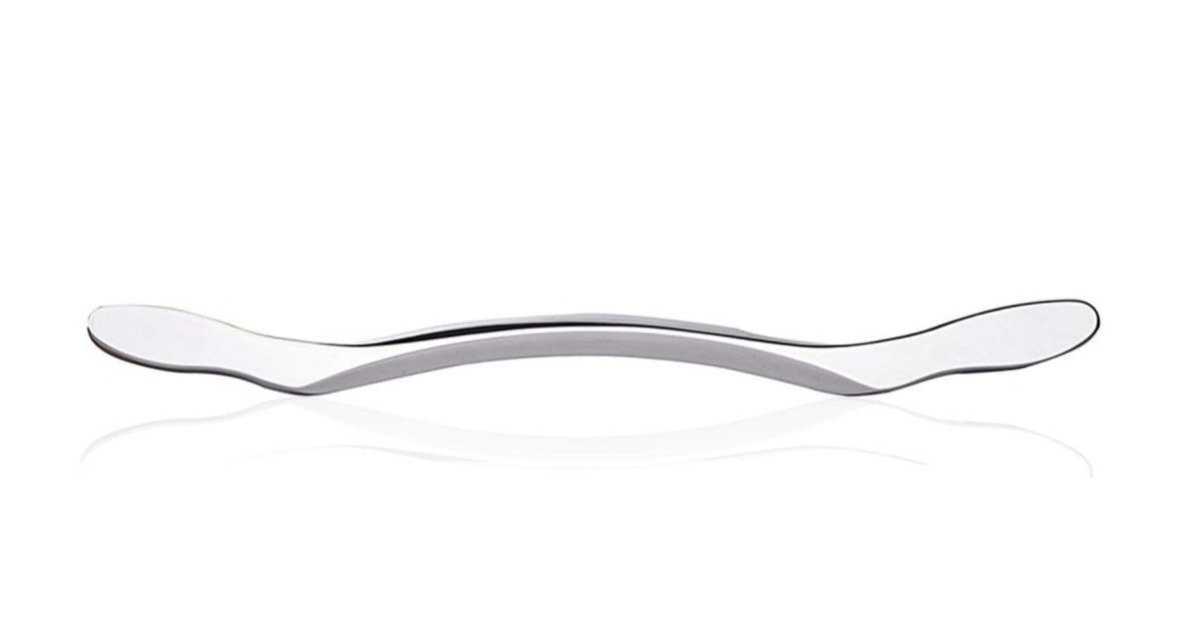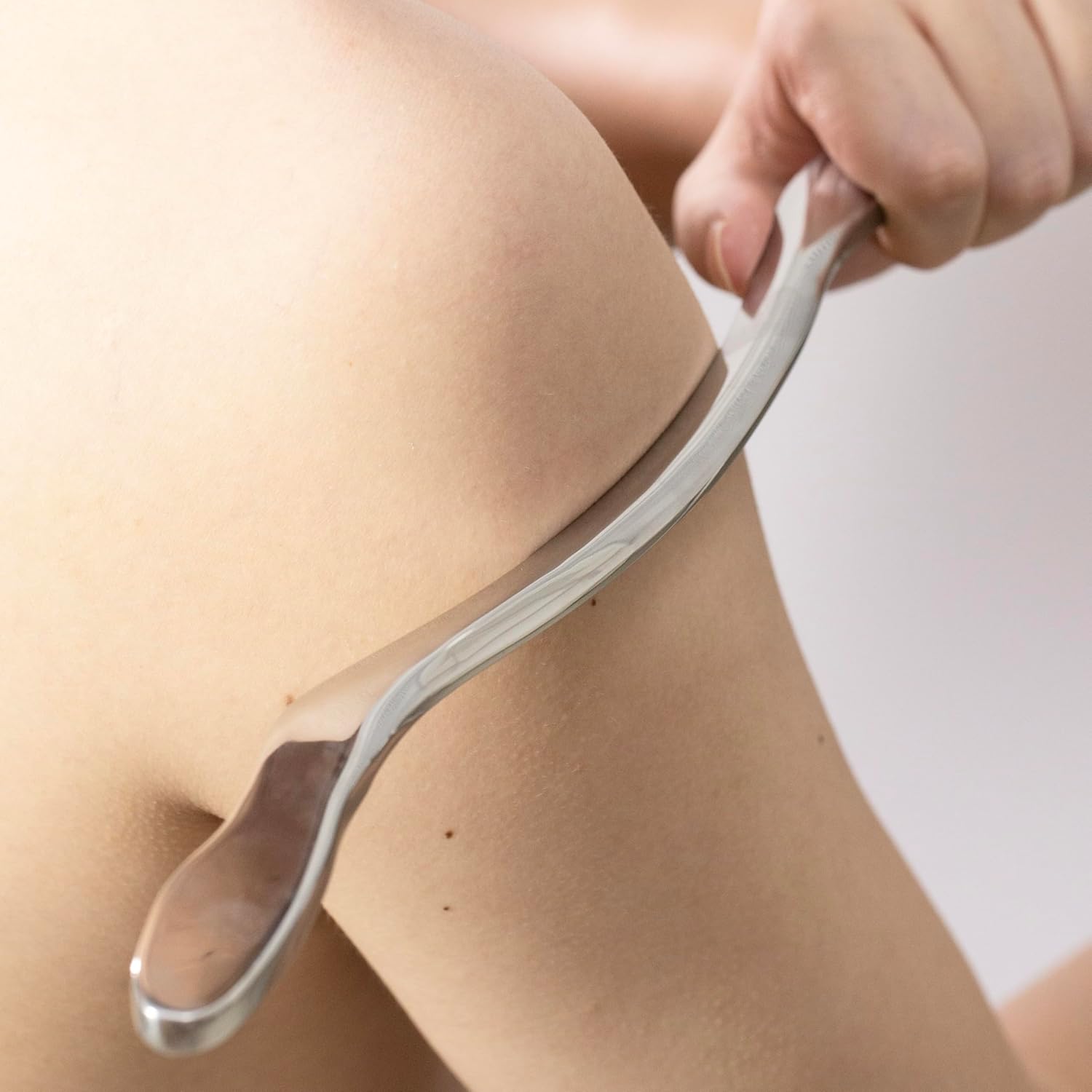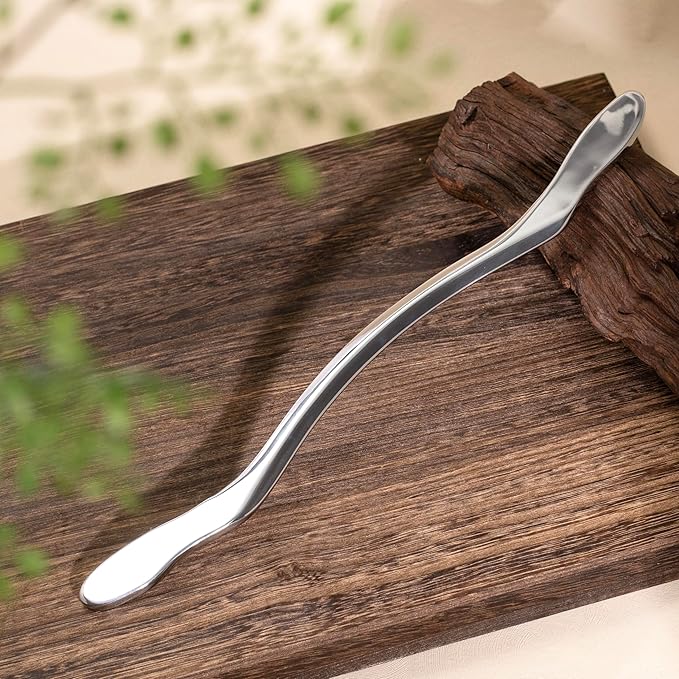It Looks Useless—Until You Try It

Source: Amazon
So last week, I’m over at my friend’s house, and he pulls out this really odd-looking metal object that’s curved. He puts it on his coffee table, with no explanation. There’s a banana next to it, so naturally I say, “What type of fancy-schmancy butter knife is that?”
My friend doesn’t answer. Instead, he gives me this goofy smirk as if he’s the keeper of some sort of earth shattering secret.
At this point, I’ve become somewhat of a detective, and since I love trying to figure things out, I snap a picture of the object, upload it to Google Lens and voila! The results tell me that it’s a strigil.
A strigil?! What’s that?!
The Ancient Roman Strigil, Apparently
Apparently, the strigil was a body-scrubbing device used by ancient Roman athletes and bathers before showers. I mean, think 2000+ years ago. These individuals would apply olive oil to their skin, which seems to be quite messy, and then use the strigil to remove the oil, as well as sweat and dirt. Gladiators, philosophers and many others likely used the strigil.
As crazy as it may seem, the strigil worked. No soap was needed, just olive oil and a curved metal tool to scrub away dirt and grime. The Romans obviously found ways to keep clean and refreshed, without needing all the products we use today.

Not Just for Romans Anymore
Strigils aren’t just a relic of the past. People are still using them today. I know, I couldn’t believe it either!
Wellness enthusiasts have branded the strigil as a tool for muscle scraping, gua sha and fascial release. In short, these are simply fancy words for “it hurts” and “this will help”. Physical therapists, massage therapists and even your friend who has a massage gun and drinks kombucha use these tools.
The tool itself has remained relatively the same shape. Curved and slightly awkward looking. However, today it’s typically made from high-quality materials such as stainless steel and sold as a premium recovery tool.
I gave it a shot myself. Honestly, it felt awesome after working out. Similar to scratching an itch you didn’t know existed. I used it on my calf and lower back muscles and could literally feel the knots being released. As a bonus, it made me feel a connection to some ancient Roman dude who was complaining about his sore legs after a long day of chariot racing.
I Kinda Love That It’s So Low-Tech
I also appreciate how low-tech this tool is. A world filled with smart watches that constantly remind you to stand, apps that track how poorly you slept (and send reminders), the strigil is refreshing in its simplicity. No batteries, no charging, no app, just a piece of metal.
In fact, it’s almost like the opposite of a gadget. And, strangely enough, that makes it cool.

Lastly, there is something oddly gratifying about using a tool that has been virtually unchanged for 2000 years. It’s functional, historical and doesn’t buzz or make annoying noises.
So, Should You Get One?
If you’re interested in wellness trends or just want to try something ancient and slightly cool, I’d recommend giving a strigil a shot. They work incredibly well to relieve post-exercise tension, and it’s definitely an interesting alternative to the endless options of foam rollers.
And hey, if anything, it’ll give you a great conversation topic. Simply place it next to a banana and wait for your friends to start speculating.